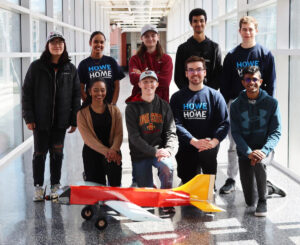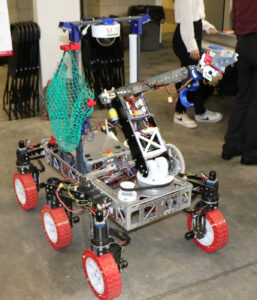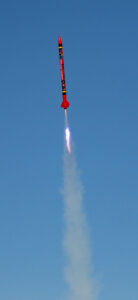Accomplishments aplenty in big year for The Make To Innovate student program
Author: John Burnett-Larkins
Author: John Burnett-Larkins

Four of M:2:I’s six competition teams qualified for their respective competitions. Two teams – Design Build Fly (DBF) and CyLaunch, competed in April. DBF competed in the American Institute of Aeronautics and Astronautics DBF competition, placing 46th in a field of 107 teams, marking the team’s first time in a competition in nearly give years.
CyLaunch returned to the NASA Student Launch competition and although awards will not be presented until June, the team came within one foot of their projected 5,000 foot apogee. A strong placement is expected.

Two M:2:I teams that will be traveling in June are MAVRIC (Mars Analog Vehicle for Robotic Inspection and Construction), headed to the University Rover Challenge (URC) in Hanksville, Utah as well as the RASC-AL (Revolutionary Aerospace Systems Concepts Academic Linkage) team, traveling to Cocoa Beach, FL for a paper competition. Both of these competitions are highly competitive, with URC only accepting 38 from more than 102 applications and for RASC-AL, the ISU team was in the top five finalists in their category.
M:2:I service teams have been busy as well. The HABET (High Altitude Balloon Experiments in Technology) team traveled to Carbondale, IL to launch a high-altitude balloon from the football stadium at Southern Illinois University during the 2024 total solar eclipse. The group worked with the Montana Space Grant Consortium as part of the Nationwide Eclipse Ballooning Project. The data gained from this effort will be invaluable.

CySat-1 (Cyclone Satellite) is also integrated and is set to be part of the manifest aboard NASA’s Cygnus NG-21 robotic resupply spacecraft to be launched to the International Space Station (ISS) in August, 2024. This satellite will be the first to be completely assembled by students from Iowa, making it the first of its kind to be launched from the State of Iowa. The satellite will carry a payload that will measure soil moisture. It has a unique design due to the small size of the satellite. It will make its way to the ISS and will be launched into Low Earth Orbit (LEO) from there. It is predicted to operate for three months in LEO.

M:2:I’s research-based and industry projects have pushed boundaries in engineering knowledge. These projects are allowing students to have opportunities that they are not able to receive in a typical classroom. Their research has touched space, aeronautics, chemistry, and beyond to find new solutions to problems our world may face. The students had very successful test flights of a new wing design tested on a model Boeing 737 as well as development of new methods for cold welding. The program has also been very active in submitting grants, including a National Science Foundation Established Program to Stimulate Competitive Research (EPSCoR) grant, several Iowa Space Grant Consortium grants, and National Space Grant Consortium grants, most of which have been awarded.